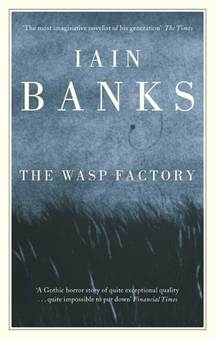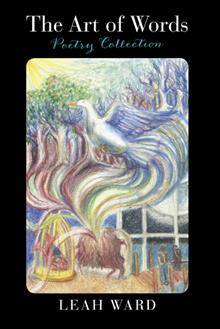
Frank — no ordinary sixteen-year-old — lives with his father outside a remote Scottish village. Their life is, to say the least, unconventional. Frank's mother abandoned them years ago: his elder brother Eric is confined to a psychiatric hospital; & his father measures out his eccentricities on an imperial scale. Frank has turned to strange acts of violence to vent his frustrations. In the bizarre daily rituals there is some solace. But when news comes of Eric's escape from the hospital Frank has to prepare the ground for his brother's inevitable return — an event that explodes the mysteries of the past & changes Frank utterly.

This book is perfect for the task. Boy oh boy this is messed up. Messed up and fabulous. Published in 1984, The Wasp Factory is darkly gothic and more psychologically creepy than a jumpy, needing-to-sleep-with-the-light-on horror.
The main character Frank is alluringly grotesque. Branded by his social “otherness” (and physically separated by the rest of the village by living on an island), in many ways Frank is the typical embodiment of a teenage angst/coming-of-age drama. He’s struggling to understand himself; he has the somewhat problematic issue of family relationships; his worldview is cynical and the few adults around him aren’t ideal role models. That’s the fairly normal stuff. Then throw in the unhinged older brother - confined to a psychiatric hospital for setting dogs on fire - who has just managed to escape, and the distant, secretive father who is rigidly anal and eccentrically old-fashioned. Nothing too bad I hear you say? Aside from the dog burning thing? Well, then there’s Frank.
A large portion of Frank’s time is spent trapping and killing animals so that their heads can be used on his “Sacrifice Poles” which stand on the island as some kind of morbid lookouts. Obviously. Frank uses something which he refers to as “the Factory” to help him make decisions and provide him with some kind of foresight. Again, it isn’t pleasant. There’s definitely a sadistic, torturous sociopath lurking underneath the relatively normal guise of a sixteen-year-old boy. Oh, and he’s a murderer.
‘That's my score to date. Three. I haven't killed anybody for years, and don't intend to ever again. It was just a stage I was going through.'
Brr. The temperature of the room just noticeably dropped. He’s matter-of-fact and clinical; the unprovoked violence which is described in such an emotionally detached way is the very definition of chilling, yet I couldn’t tear my eyes away from the pages. There’s no way of getting round this point: I couldn’t help but marvel at Frank’s ingenuity. He’s clever, he’s analytical, he’s resourceful and he’s thorough.
Although Frank’s actions are repulsive and abhorrent, his fervent beliefs and justifications are almost something to be admired. His decisiveness, his strong sense of right and wrong (though dangerously skewed) and his consequent actions are meticulous, scary, disturbing and yet compelling.
The Wasp Factory is unexpectedly humorous - the section where Frank has his dwarf friend Jamie on his shoulders as he chats up a girl is hilarious - and gives the reader some glimpses of recognisably “normal” behaviour that Frank is capable of. This demonstrates real skill on Iain Banks’ part because I actually disregarded all of Frank’s previous actions and was able to focus on the humour of the situation and, I hate to admit it, but even like Frank. It’s an exceedingly puzzling and unnerving experience, but one that is crafted perfectly. Banks has created a truly remarkable character in Frank Cauldhame.
The writing is accessible, the descriptions are vivid (horribly so at times) and numerous important questions are raised, such as the boundary between what is deemed “sane” and “insane”. The ending was a complete surprise and I felt genuinely exhilarated when I’d finished reading. The plot twists are genius but I obviously can’t mention them here because – well – that would defeat the point. Trust me; they’re good.
I laughed; I was unsettled; I was horrified; I both loved and hated the divisive, disturbing narrator, but most importantly, I was mesmerised. A brilliant alternative book for Halloween reading.





 RSS Feed
RSS Feed
